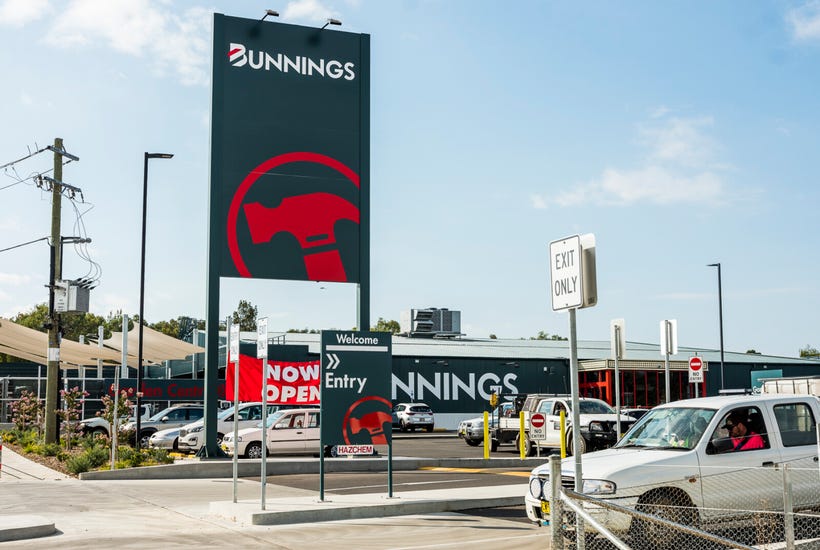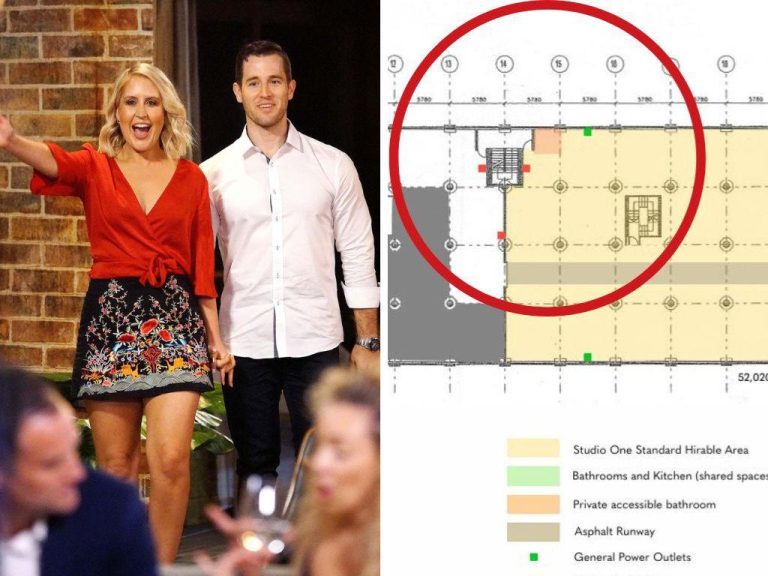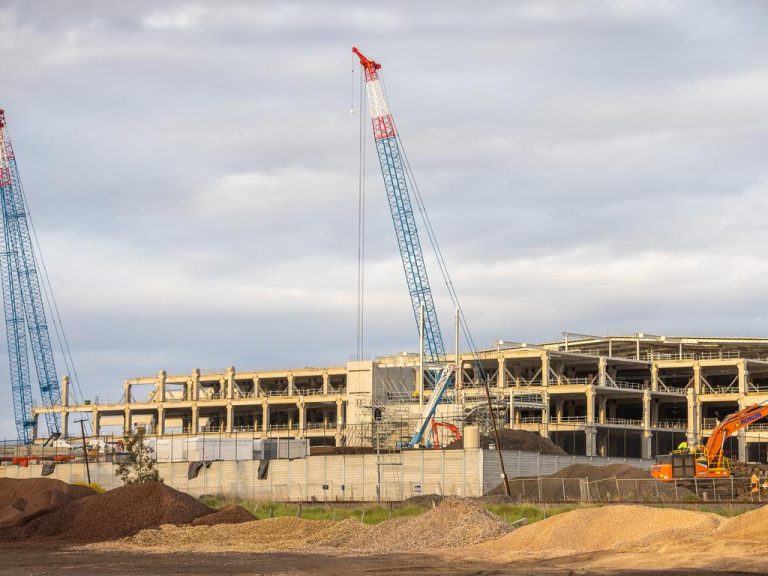Bunnings Warehouses to remain highly prized by investors

Bunnings Warehouses are expected to remain a favourite with investors, having become even more highly prized during the COVID-19 pandemic.
Private investors, funds, syndicates and institutions have all been targeting assets leased to the hardware retailer.
REA Group economist Anne Flaherty said Bunnings assets have been a growing favourite with commercial property investors.
“Unlike many other retailers, Bunnings has benefited from the pandemic, due to the surge in spending on new homes, renovations and DIY projects,” Ms Flaherty said.
“Setting Bunnings aside from other hardware stores is its well-established brand and strong customer loyalty.”
Stonebridge Property Group partner Phil Gartland said Bunnings is one of the most sought-after commercial real estate investments.
“Bunnings have such a strong market share and a really strong brand that investors can associate with,” Mr Gartland said.
“And there’s an element of it being a little bit of a trophy owning a Bunnings warehouse, for a high-net-worth private investor.”
Bunnings appeals to a range of investors
Colliers national director (NSW) of retail investment services James Wilson said Bunnings investments appealed to a wide range of private and institutional investors.
The key investment criteria included long-term leases backed by Wesfarmers, which also owns Kmart, Target and Officeworks.
Mr Wilson said an annual rental review mechanism guaranteed income growth potential in a low interest rate environment.
Bunnings Warehouses also typically occupied large, strategic freehold sites with strong underlying land value.
“The varying size of investments from $10 million to $85 million attract a wide range of mandates,” Mr Wilson said.

Bunnings enjoys strong customer loyalty and the warehouse investments also have a loyal following. Picture: realcommercial.com.au/sold
Like its loyal customers, Mr Gartland said Bunnings investments also had a very loyal following.
“There’s a number of investors – high-net-worth privates and institutions like Charter Hall – that just keep coming back to them because they’re just good to deal with,” he said.
“They are just so simple to manage; buyers just love that simplicity and the strength of the brand.
“The net lease structure is one thing but also the fixed growth that they offer in their leases is really important as well.”
Mr Gartland said under the lease structure, Bunnings was responsible for the entire land parcel, making it a very straightforward proposition for investors with a blue-chip covenant.
Bunnings also picked well-located sites that could be repurposed if the hardware retailer ever left, he said.
“Because they are a big tenant, the rental that they pay on the land parcel is relatively low and so there’s always an alternative that may be higher than Bunnings if they were ever to leave.
“We’ve seen it quite a few times now where Bunnings have upgraded to a bigger store and they’ve left behind an old store, but there’s many examples of those landlords repurposing those Bunnings for industrial or large format retail or even residential and getting a much higher return out of it post Bunnings being a tenant there.”

Private investors and major property players have been targeting Bunnings assets during the pandemic. Picture: realcommercial.com.au/sold
Private investors and major property players have been increasingly targeting Bunnings assets during COVID.
Mr Gartland noted Charter Hall and Newmark Capital have been the two biggest players in the Bunnings investment space.
Charter Hall owns more than 60 Bunnings sites, while the Newmark Property REIT listed on the ASX in December with plans to expand further in the large format retail sector. The REIT owns eight large format retail properties, primarily leased to Bunnings.
Institutions were having to offer “cleaner” or more upfront bids, instead of a traditional exclusive dealing period, to compete with keen private investors for assets like Bunnings, Mr Gartland said.
“What we’ve seen through this buoyant property cycle is that the institutions have really had to be a lot cleaner with their bids,” he said.
“In most instances when we’re selling the Bunnings these days we’ve got a signed contract at the end of the process and so the vendor can just choose the preferred bidder and exchange contracts. There’s no deal risk really for them.”
COVID drives demand for ‘pandemic-proof’ assets
Ms Flaherty said many commercial property investors have diversified away from assets such as offices in favour of more resilient, “pandemic-proof” properties, resulting in increased competition for higher-performing assets such as Bunnings.
“COVID has altered the risk profiles of many commercial assets, which has driven a rethink among many investors when it comes to the types of properties they’re looking to buy,” she said.
“Assets such as Bunnings which have proved their resilience throughout the pandemic are now generating more interest from investors compared to pre-COVID.
“Assets with strong covenants and long lease terms in place are particularly sought-after by investors seeking a strong yield with comparatively low risk.”
Ms Flaherty said the large format asset class has been among the strongest performers throughout the pandemic, particularly those tenanted by household goods retailers.
She said spending on household goods retailing had outpaced any other asset class when comparing pre- and post-COVID figures, with spending up 23.3% or by $1.1 billion between October 2019 and October 2021.
“Demand for large format retail is expected to remain strong in 2022 and benefit from the booming property market,” Ms Flaherty said.
“Spending on household goods and hardware correlates with movement in housing, for example furnishing or making alterations to a new property.”

The booming property market and home improvement trend have driven spending in large format retail stores during the pandemic. Picture: realcommercial.com.au/sold
Mr Gartland said Bunnings had been pretty resilient in terms of their sales during the pandemic.
“They’re not a supermarket, they’re not non-discretionary, but there’s always a need for home improvement items or plants or whatever it may be.
“They’re as close as you’re going to get to a non-discretionary retailer in that genre.”
Strong investor demand for Bunnings to continue
Following unprecedented levels of investor demand for non-discretionary retail assets led by supermarkets and hardware stores, Mr Wilson expected the strong interest in Bunnings to continue.
“We anticipate the strong interest and results to continue for high-quality offerings, in particular Bunnings Warehouse investments, into 2022,” he said.

The Bunnings properties that came up for sale in 2021, like this one in Queensland’s Plainland, were all the subject of competitive bidding. Picture: realcommercial.com.au/sold
The Bunnings assets that came up for sale during 2021 were all subject to competitive bidding, although Mr Wilson said there may be a reduced supply in 2022.
According to Colliers data, 13 freestanding Bunnings Warehouse investments transacted in 2021, totalling more than $485 million.
Mr Wilson said that number was three above the long-term average of 10 per annum and the equal highest number of Bunnings Warehouse transactions recorded by Colliers since 2015.
“A large percentage of transactions in 2021 were also generated from ‘fund through’ or recently-completed Bunnings Warehouse developments,” Mr Wilson said.
“The lack of Bunnings Warehouses currently under construction may result in investors competing for a reduced investment supply in 2022.”
Only a handful of the freestanding Bunnings that changed hands in 2021 were offered through a public sale.
The latest was a Bunnings Warehouse under construction in Queensland’s Hervey Bay, purchased by New Zealand private investment company Cook Property for $58.6 million in a November deal negotiated by Stonebridge and Savills.
In September, a Victorian syndicate led by The Lowe Group paid $28.55 million for a Bunnings being built at Kempsey on the NSW mid-north coast in a sale handled by Colliers.

This metropolitan Bunnings in Adelaide’s Munno Para West was bought by Charter Hall for $48.8 million. Picture: realcommercial.com.au/sold
Property investment group Charter Hall added to its portfolio of warehouses leased to Bunnings with the $48.8 million purchase in August of Adelaide’s Bunnings Munno Para West. Colliers noted it was the first metropolitan Bunnings Warehouse to be publicly marketed since 2019.
A Melbourne family paid $22.2 million for a newly-opened Bunnings in Queensland’s Plainland in a Burgess Rawson portfolio auction in June, while a Sydney-based private investor paid $11 million for a Bunnings in the NSW town of Young in May after an on-market campaign by Colliers.
Record Bunnings yields may compress further
Ms Flaherty said the increased demand for Bunnings assets has been reflected in pricing, with sub-5% yields now the norm.
“The current low interest rate environment is also having an impact, decreasing the cost of debt and increasing investors’ willingness to buy at a lower yield.”
The Colliers data showed 85% of this year’s freestanding Bunnings Warehouse investments transacted with a core capitalisation rate below 5%.
The Bunnings Hervey Bay sale, which Stonebridge and Savills said generated fierce bidding competition, set a new national benchmark yield for a Bunnings of 4.0%.

An artist’s impression of the Bunnings under construction in Queensland’s Hervey Bay, which sold on a record 4.0% yield. Picture: Supplied by Stonebridge and Savills
Colliers said there is further potential for cap rate compression, noting that three single-tenanted Bunnings investments transacted with cap rates below 4%.
Mr Gartland also predicted Bunnings yields could compress further, noting there were comparative value drivers with industrial being far and away the most in-demand sector.
He noted the Bunnings Warehouses were still on a higher yield than a prime industrial property, which was selling at 3.5% at the moment compared to Bunnings Hervey Bay’s record 4% yield.
“So, there’s still a comparative value differential there, despite the fact that it’s effectively a single tenant like an industrial property,” Mr Gartland said.
“With industrial yields being so strong still and being so much in demand, I do feel there will be a little bit more compression with Bunnings as well. I think there will be some yields that are sold in the 3s in the not-too-distant future.”







